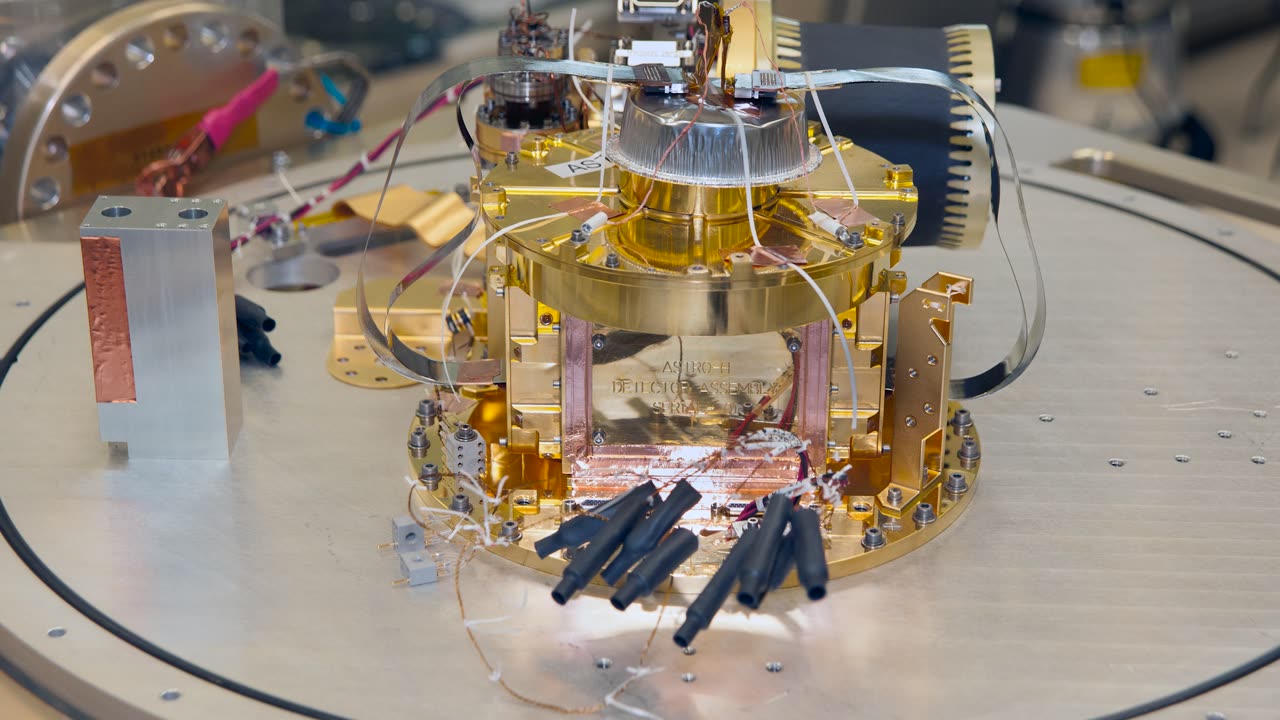Premium Only Content

XRISM: Exploring the Hidden X-ray Cosmos #XrayRevelations
A powerful satellite called XRISM (X-ray Imaging and Spectroscopy Mission) is set to provide astronomers with a revolutionary look at the X-ray sky.
XRISM is led by JAXA (Japan Aerospace Exploration Agency) in collaboration with NASA and with contributions from ESA (European Space Agency).
XRISM detects X-rays with energies ranging from 400 to 12,000 electron volts. (For comparison, the energy of visible light is 2 to 3 electron volts.)
This range will provide astrophysicists with new information about some of the universe’s hottest regions, largest structures, and objects with the strongest gravity.
The mission has two instruments, Resolve and Xtend.
Resolve is a microcalorimeter spectrometer developed in collaboration between JAXA and NASA. When an X-ray hits Resolve’s 6-by-6-pixel detector, its energy causes a tiny increase in temperature. By measuring each individual X-ray’s energy, the instrument provides information about the source, such as its composition, motion, and physical state.
To detect these tiny temperature changes, Resolve must operate at just a fraction of a degree above absolute zero. It reaches this state in orbit after a multistage mechanical cooling process inside a refrigerator-sized container of liquid helium.
XRISM’s second instrument, Xtend, was developed by JAXA. It will give XRISM one of the largest fields of view of any X-ray imaging satellite flown to date, observing an area about 60% larger than the average apparent size of the full moon. The images it collects will complement the data collected by Resolve.
Each instrument is at the focus of an XMA (X-ray Mirror Assembly) designed and developed at Goddard.
X-ray wavelengths are so short, they can pass straight between the atoms of the dish-shaped mirrors used to capture visible, infrared, and ultraviolet light.
Instead, X-ray astronomers use nested curved mirrors turned on their sides. The X-rays skip off the surfaces like stones across a pond and into the detectors.
Each of XRISM’s XMAs houses hundreds of concentric, precisely shaped aluminum shells built in quadrants and assembled into a circle. In all, there are over 3,200 individual mirror segments in the two mirror assemblies.
After launch, XRISM will begin a months-long calibration phase, during which Resolve will reach its operating temperature.
#XRISM
#XrayDetection #AstrophysicsDiscovery #SpaceObservatory #Astrolnstruments
#Xtendlmaging #SpaceTech #Xray Telescope
#AstronomyFacts #ScientificExploration
#HiddenUniverseRevealed #XrayMirror Technology #XrayUniverseRevealed #SpaceScienceExploration
#AstrophysicsInsights #CosmicXrayMission
#AstronomyBreakthroughs #XrayTelescopeMission #UnlockingCosmicMysteries #SpaceXrayObservation
-
 UPCOMING
UPCOMING
LFA TV
9 hours agoBREAKING NEWS ALL DAY! | FRIDAY 9/26/25
1.76K1 -
 UPCOMING
UPCOMING
Welcome to the Rebellion Podcast
15 hours agoYou Made it to FriJay - WTTR Podcast Live 9/26
151 -
 LIVE
LIVE
Game On!
16 hours agoNFL Week 4 Betting Report Preview!
2,022 watching -
 21:05
21:05
Adam Does Movies
20 hours ago $0.62 earnedAlien: Earth Episode 8 - Recap
3.26K3 -
 18:49
18:49
World2Briggs
18 hours ago $0.31 earnedTop 10 States To retire in 2026 According to Experts
1.62K3 -
 19:03
19:03
Blackstone Griddles
13 hours agoParmesan Ranch Chicken Sandwich oxn the Blackstone Griddle
3.84K3 -
 LIVE
LIVE
BEK TV
22 hours agoTrent Loos in the Morning - 9/26/2025
194 watching -
 LIVE
LIVE
The Bubba Army
21 hours agoJimmy Kimmel's Audience Plummets by 20 MILLION! - Bubba the Love Sponge® Show | 9/26/25
1,550 watching -
 17:24
17:24
Sponsored By Jesus Podcast
21 hours agoLoving Our ENEMIES & Praying for Those Who Hurt Us
3.43K3 -
 4:22
4:22
NAG Daily
14 hours agoSaving Grace #4 — Is The BIBLE Wrong?
10.7K5